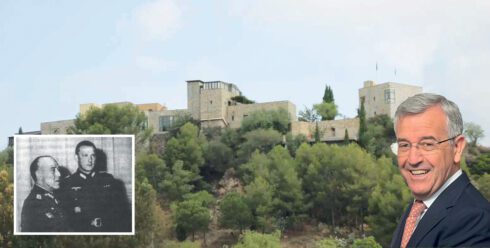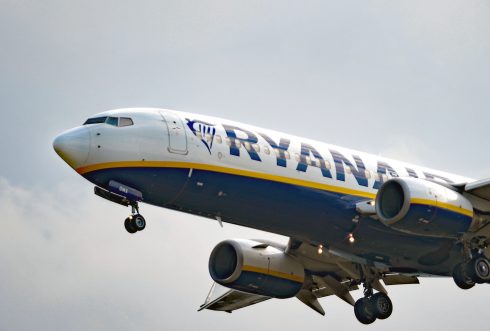PERCHED upon the highest point in Chiclana de la Frontera sits the round cupola of the Ermita de Santa Ana.
The church is located on one of the fabled ‘seven magical spots’ in the sprawling town, lodged among salty marshlands just south of Cadiz.
In the 9th century, long before the chapel was built in 1733, it was an old watch tower from where the town’s defenders scanned the horizon.
They were looking for the telltale sight of the dreaded Viking longboat.
READ MORE: These are the three most beautiful streets in Spain’s Andalucia – according to Traveller magazine
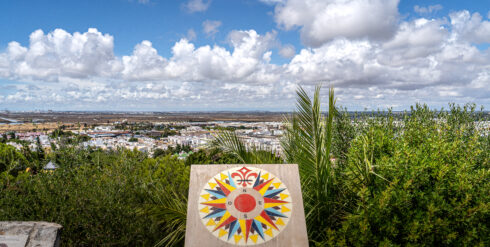
Now, over a thousand years later, Chiclana is no longer a frontier town – but the coast it used to guard is preparing itself for another invasion from the north.
The Costa de la Luz stretches from Tarifa in Spain’s most southern point, through the sparkling coastal fortress city of Cadiz, and up into Huelva.
It is a beautiful coastline dotted with stunning towns, like Vejer de la Frontera and Zahara de los Atunes, largely unscathed from the ill effects of mass tourism.
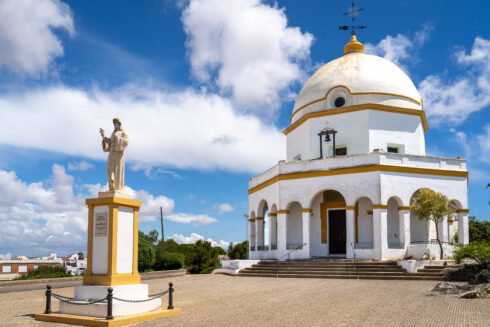
By flying under the international tourism radar, the Costa de la Luz has managed to dodge the fate of neighbours Sevilla and Malaga, where huge tourist demand has sent the cost of living spiralling.
So the recent announcement by airline Jet2 to open a raft of new routes to nearby Jerez has been met with some trepidation.
The new routes, from Manchester, Leeds and Birmingham, could see 30,000 Brits arrive each week from next summer. This for a region that has – until now – barely registered on the British tourist’s holiday itinerary.
Yes, of course, a few savvy travellers know of the charms of Vejer, Conil and, of course, Tarifa, particularly the ones who like watersports and wind, but most expats who live on the nearby Costa del Sol haven’t even ventured this way.
Which means that this stunning stretch of coastline has an extraordinary number of largely unspoilt gems to discover.

Tasked with exploring a less visited part of the coastline and finding some new hidden spots, I was delighted that in late June, the sight of a foreigner was vanishingly rare.
Chiclana’s eight kilometres of pristine beaches, for example, were populated almost exclusively by Spaniards enjoying the serene Atlantic swells.
While the winery and salt mine tours were similarly taken up by their fellow compatriots, mostly tourists from Sevilla and other inland regions.
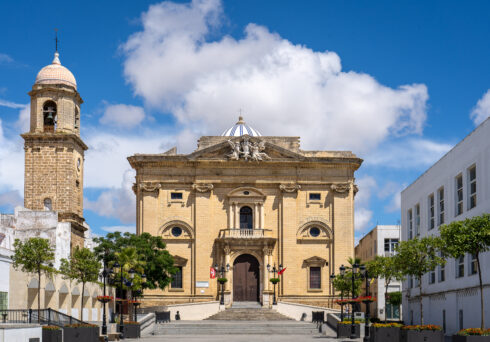
In the town itself, the narrow streets of the historic centre are full of interesting remnants of the Moorish era, such as the Arco Torre del Reloj, and littered with terraces offering cañas and tapas.
In Taperia La Flamenca, the beaming waitresses were all local lasses who live nearby. When asked what was the best thing about town, the three girls all laughed and said: us!
“I love the people here, the atmosphere of Chiclana,” said one. “All my friends and family are here – why would I want to move to Sevilla or Madrid?”
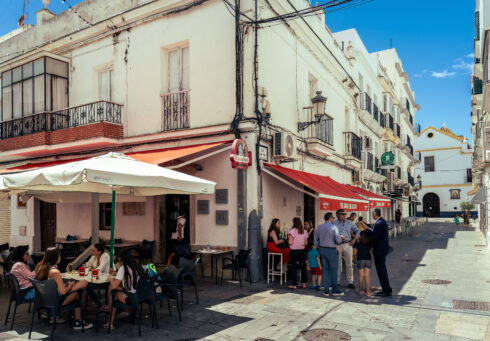
It’s a refreshingly different reality from, say, the Costa del Sol, where the locals are increasingly pushed out of their own towns by Airbnb apartments and the influx of wealthy foreigners.
Just a 15 minute drive north is interesting San Fernando, an old naval shipyard in the hazy shadow of Cadiz’s bridges and container cranes.
It is another exquisite Spanish pueblo, populated with trendy bars that were active even before the buzz of the nightlife came out to play.
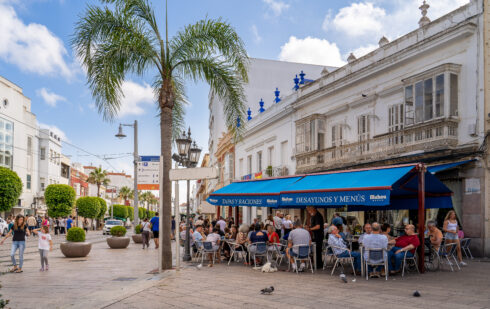
The walkable, slug-shaped town is well-connected to Cadiz and Jerez by a commendable tram system.
In its glory days, it served an important role in Spanish history, being the site of the first Spanish parliament, known as the Cortes de Cadiz.
The early 19th century was a period when Spain flirted with democracy – even before the traditional European democracies of Britain and France.
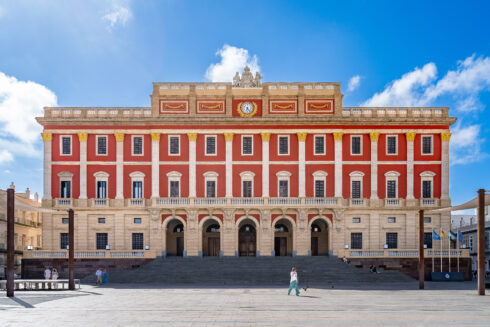
San Fernando is also strategically located on the Isla de Leon, being connected to the mainland only by a parade of bridges.
It’s this island that lent its name to San Fernando’s most famous son – flamenco singer Camaron de la Isla, which translates as ‘Shrimp from the Island’.

Camaron was born into a poor neighbourhood, where he shared a single room with his entire family who in turn shared one bathroom with another six families.
Today his house has been transformed into a shrine to the man who put San Fernando on the map, and his outsized influence on bringing flamenco music into the mainstream.
While some fans were clearly mesmerised, renovations have turned the old abode into a lifeless white adobe box, completely robbing it of what it must have been like in Camaron’s childhood in the 1950s.
On the other side of Cadiz but still within its gravitational pull lies another naval town, but this one very much active.
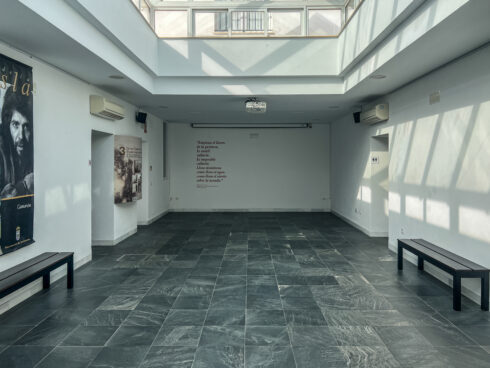
Rota is home to several kilometres of white sandy beaches, chiringuitos and restaurants – and an enormous American naval base larger than the town itself.
Somewhat incongruous on the tranquil ‘coast of light’, Naval Station Rota – as the US military refers to it – is home to some seriously impressive firepower belonging to the US 6th Fleet.
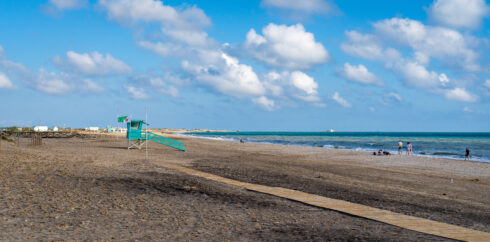
Four American Aegis destroyers are permanently stationed at the base, tasked with protecting south-western Europe from missile attacks.
And the Americans are certainly not seen locally as an unwelcome occupying force, but a valued part of the community, which at times feels like Costa Americana.

Among a coast almost devoid of foreigners in the summer, the twang of American-accented English stands out almost as much as the American-style diners and Irish bars.
“We love the Americans here,” Maria Almagro, 46, told the Olive Press. “They behave very well – they are even politer and more respectful than the Spanish.”
Maria, who runs the Great Day Coffee Diner offering American breakfasts, milkshakes and waffles, left Rota for the US when she was 19.

After nearly 20 years driving an 18-wheeler truck around the American continent, she is back to help care for her elderly mother.
I soon found myself talking to a young American ensign, who identified himself as ‘Garcia’, and told me his destroyer had just returned from a tour of the Middle East and Israel – ‘nothing happened though.’

“When the big ships come in to restock, like the aircraft carriers, all the Americans hit the town to go out and party,” explained Maria.
“And sometimes they send an Uber to pick up a huge order for 40 people in the base.”
And she continued: “There’s literally never any trouble. They’re good people. And us Spanish, we love Americans. Because they come with money.”

A short hop away lies Chipiona, a charming workday beach town, that would find itself completely under water should a tsunami hit.
This was graphically illustrated by the curious ‘What to do in case of a tsunami signs’ that littered the beachfront.

The seemingly fanciful signs – and evacuation plan they laid out – were erected in preparation for last November’s tsunami drill, which crowned Chipiona as Spain’s first ‘tsunami-ready community’.
And while the last major mega wave to hit Spain came nearly 300 years ago during the 1755 earthquake which wiped out Lisbon, the region is not so far from the boundary between the Eurasian and African tectonic plates. Some might even say it’s due another one.
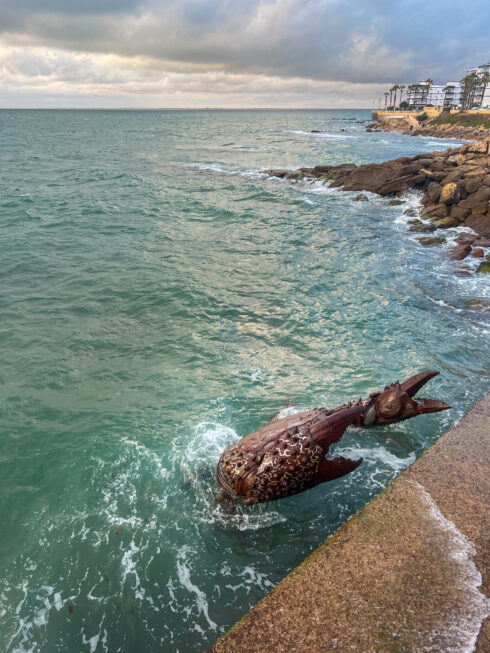
While no tsunamis struck as the Olive Press enjoyed the town’s hospitality, a series of freak rain squalls – almost unheard of in late June – caused their own aquatic chaos.
The unseasonal watering caused the town’s chefs to dash out into the marshes to hunt for something that would never usually be on the menu in summer.
So at night, it was peculiar to see hasty handmade signs declaring ‘WE HAVE SNAILS’.

The Olive Press could not turn down the opportunity to try such a rare delicacy at the Pide Y Come restaurant.
It was a charming eatery run by local couple Paco, 32, and Caridad, 29, who met one day while out walking their dogs.
Paco explained that the sauce was not made from garlic, but from basil, cumin, and – as he took a breath to list the rest of the ingredients, he suddenly closed his mouth and took on a sly smile.
He was not about to reveal the secret family recipe to a nosy journalist.
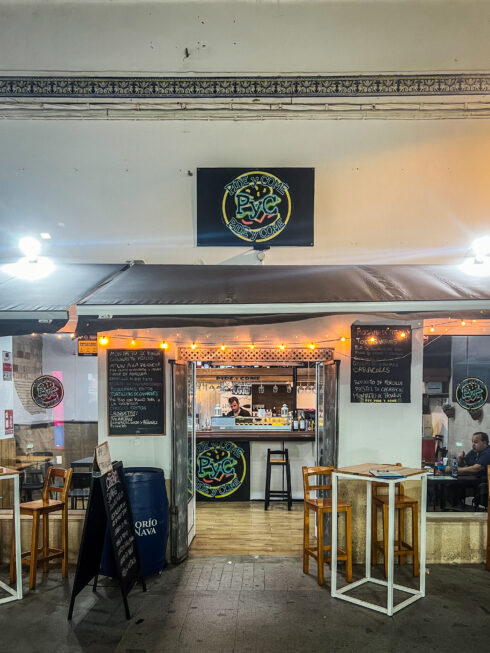
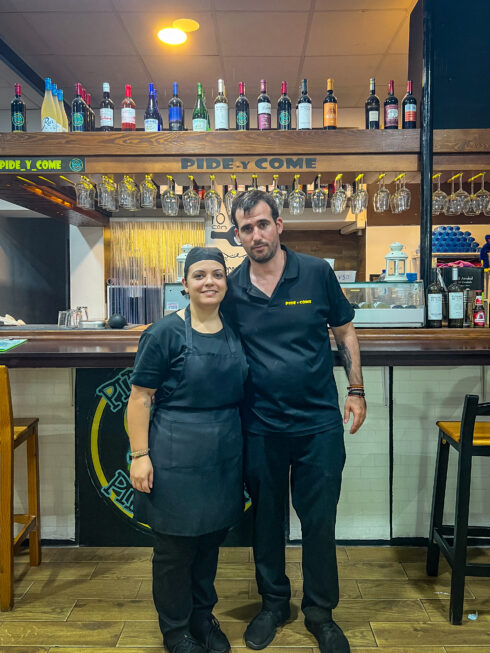
The menu was full of such unique offerings, the ingredients of which the couple would sooner die than give up, including ‘Aurora’s meatballs’ – Aurora being Caridad’s grandmother.
When told that they could perhaps expect a lot more British and foreign tourists in future summers, the pair shrugged and said they didn’t pay attention to the anti-tourist protests sweeping the country.
“It can only be a good thing,” Caridad said.


